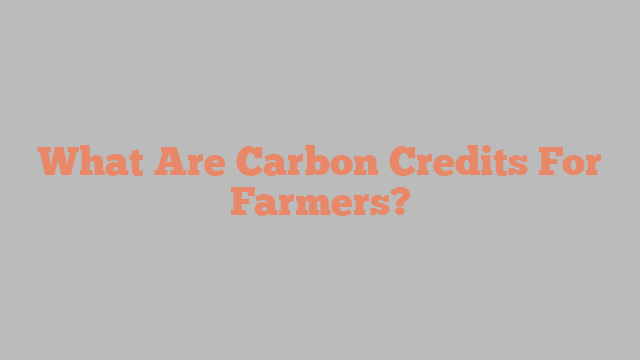A carbon credit is a permit to pollute less than a certain amount of greenhouse gases (GHGs) over time. A company may purchase credits to offset its own GHG emissions, or governments may buy them to meet their climate goals.
Farmers can earn money by helping companies mitigate their greenhouse gas emissions through a new type of carbon trading. The voluntary market for these permits has accelerated over the past year, driven by new corporate net-zero goals and international efforts to limit warming to 1.5 degrees Celsius or lower.
In the new trading system, farmers are being compensated for improving their land and reducing carbon in the soil, known as carbon sequestration. The process is complex and requires a lot of data. For example, to determine the carbon content in the soil, a scientist must take meter-long cores of soil across hundreds or thousands of acres. The samples are then sent to a lab, where scientists analyze them for carbon.
Companies specializing in carbon.credit trading can help farmers navigate the process and find ways to make their farms more efficient. Some of them also work with local conservation groups to connect farmers with buyers who are interested in purchasing credits.
Farmers need to find a carbon credit company that is both reputable and willing to invest in them. The companies will then work with the farmers to develop a plan for achieving their sustainability goals. Typically, the plans will include practices such as reduced tillage, changing nitrogen rates, planting cover crops and changing crop rotations.
The companies will then monitor the farm to ensure that all of the steps are being followed correctly. Once the project is complete, they will issue the farmer a certificate or other form of proof that shows how many carbon credits it produced. From there, the credits can be sold on a carbon marketplace where companies actively seek out high-impact projects to meet their emission reduction goals.
As the carbon trading system continues to evolve, some of the companies are offering incentives to attract more farmers. For example, one company is paying farmers to plant trees on their fields, which can generate carbon credits when they are planted and eventually logged. This is in addition to the payments they already receive through a government conservation program.
While there are still a lot of questions about this new market, some experts predict that it will be around for the long haul. Some say it will help ease the transition to a low-carbon economy, as the market will be an incentive for companies to make changes. Others are more skeptical, saying it will be difficult to meet the climate goals of the Paris Agreement without significantly raising energy costs for businesses and consumers.
Regardless of how the market plays out, carbon credit farming will likely become an increasingly common way for farmers to make money and do good in the world. It’s an opportunity that many farmers have embraced.
